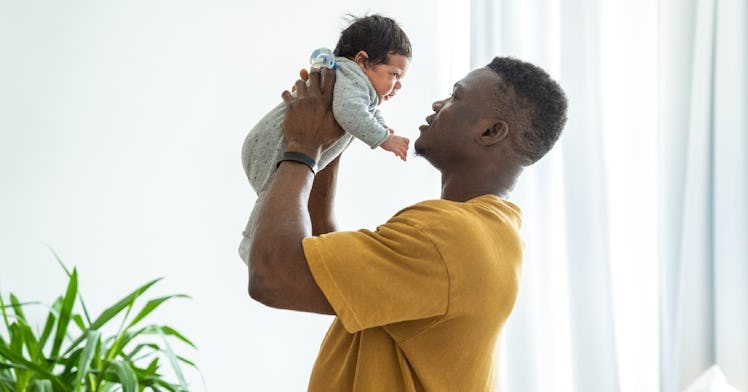Why Babies Stop Crying When Parents Stand Up
The biological reasons are deep-seated and common across species.

Newborns hate it when you sit down. They’re like tiny little drill sergeants, forcing new parents to stand at attention or march back and forth across the living room in order to get them to stop kicking and crying. But why do babies cry when put down? What difference does it make to an infant whether you’re standing or sitting, and why is early parenting more a game of non-stop plodding than one of tranquil sitting and cuddling?
Why Babies Like to Be Held
The answer has everything to do with the flight response humans evolved after a couple of millennia spent, at least in part, getting eaten by very large cats. When the person holding you is standing up, ready to run, it makes sense to be still so as not to interfere with their flight.
“The infant calming response to maternal carrying is a coordinated set of central, motor, and cardiac regulations,” according to the authors of a 2013 study, who observed human and mouse mothers trying to soothe their fussy newborns. “The calming responses may increase the survival probability of the infant in cases of emergency escape by the mother-infant dyad,” the researchers added.
The Science Behind Why Babies Cry When Put Down
For the study, scientists attached ECGs to 12 healthy infants and asked their mothers to put them down in a crib, hold them while seated, or carry them around the room for 30 seconds. The results confirmed what most parents already know — babies are happy when you’re walking, peeved when you’re sitting, and downright miserable when you put them down in a crib. But this study attached numbers to this parenting trope and tracked how each infant’s heart rate slowed to a relaxing lub-dub whenever their moms stood up.
“Heart rate variability analyses revealed that heart rate decrease was significantly higher during carrying than during holding,” the authors wrote. “These data suggest that infants were more relaxed during carrying than during holding, not only behaviorally but also physiologically.”
Here’s a video of one of those experiments. Notice how, when the mother is walking, her baby’s heart rate slows. (The graph along the bottom of the screen indicates the interbeat interval, which is the inverse of the heart rate, so higher spikes on the graph represent lower heart rates. Confusing, we know.)
The same phenomenon appears to exist in mice. Researchers found that baby mice calm down when their mothers lift them by the napes of their necks. And just like human parents, mice have trouble holding onto their offspring when they wiggle or go unnaturally limp. For the researchers, this observation provided a clue as to why babies stop crying when they’re being held. It’s easier for a parent to hold a relaxed baby — and that means both of them can make a quick escape if danger strikes.
After rescuing a few of her healthy offspring in the following video clip, a mother mouse discovers that one of her litter goes unnaturally limp when she tries to pick him up (blame the researchers — they drugged the baby mouse for the experiment). She gets the mouse pup eventually, but only after several attempts.
The findings have immediate implications for dads in search of a scientifically surefire way to calm their kids after painful vaccines or scary thunderstorms: start pacing. By tapping into an evolutionary pathway as old as our most distant mammalian relatives, you can lower their heart rates and help calm them down.
This article was originally published on